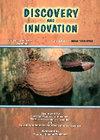Transition from Brittle Failure to Ductile Flow in a Sandy Soil
引用次数: 1
Abstract
A series of experiments were carried out using a triaxial system modified for unsaturated soil testing to investigate brittle transitional and ductile failure behaviour of a sandy clay loam soil under varying soil water and effective confining stress levels. Mechanical properties and deviatoric stress-strain relationships of the soil were also established. The specimens were prepared under laboratory conditions where the inter-particle cementation bonds were allowed to form to their natural state. An unsaturated soil mechanics approach was used to define critical state relations for the soil. All specimens attained a critical state under continuous shearing. The results demonstrate that brittle/ductile behaviour of unsaturated soils and their tendency to dilate/compact at failure are both controlled by soil water and confining stress levels. An exponential model used to fit the deviatoric stress-axial strain test data accurately predicted the trends. Soil water significantly influenced the shear strength and internal angle of friction ( \') and hence the mechanical behaviour of the sandy soil. The regression equations developed showed that \' have quadratic relationships with soil water with an asymptotic surface (transitional stage). Hence, in civil works or soil tillage the transitional range (w.c. 5 - 9% d.b.) could be taken as a useful guide towards understanding soil behaviour upon loading Keywords : Triaxial testing, critical state, brittle failure, transitional, ductile flow, effective confining stress, soil water Discovery and Innovation Vol. 19 (2) 2007: pp. 140-146砂土脆性破坏向韧性流动的转变
采用非饱和土改进的三轴系统进行了一系列试验,研究了砂质粘土壤土在不同土壤水分和有效围应力水平下的脆性过渡和延性破坏行为。建立了土体的力学特性和偏应力-应变关系。样品是在实验室条件下制备的,在实验室条件下,颗粒间胶结键被允许形成其自然状态。采用非饱和土力学方法定义了土的临界状态关系。所有试件在连续剪切作用下均达到临界状态。结果表明,非饱和土的脆性/延性及其在破坏时的膨胀/压实倾向均受土壤水分和围应力水平的控制。采用指数模型拟合偏应力-轴向应变试验数据,准确预测了变化趋势。土壤水分对砂质土的抗剪强度和内摩擦角有显著影响,从而影响砂质土的力学特性。建立的回归方程表明,\'与土壤水分呈二次关系,具有渐近表面(过渡阶段)。因此,在土建工程或土壤耕作中,过渡范围(w.c 5 - 9% d.d.b)可以作为理解荷载作用下土壤行为的有用指南。关键词:三轴试验,临界状态,脆性破坏,过渡,延性流动,有效围应力,土壤水发现与创新Vol. 19 (2) 2007: pp. 140-146
本文章由计算机程序翻译,如有差异,请以英文原文为准。
求助全文
约1分钟内获得全文
求助全文

 求助内容:
求助内容: 应助结果提醒方式:
应助结果提醒方式:


